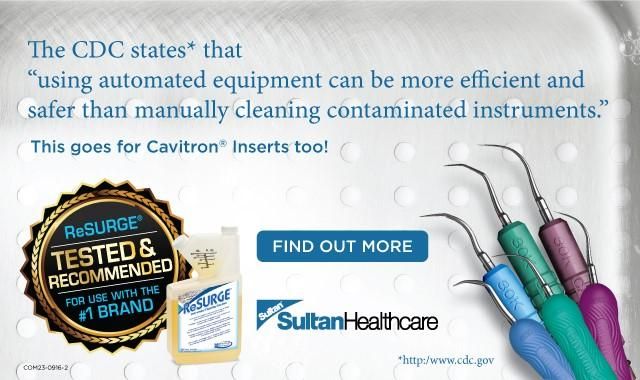5 more infection control mistakes you might not realize you're making
Are you up to date on the latest infection control practices - or is your practice making mistakes?
When it comes to dentistry, it’s easy to think what you are doing is current protocol because it’s the way your office has always done it.

Thinking this way can be a slippery slope as protocols and best practices change as new research emerges. Infection control is no different. We take infection control seriously to keep ourselves and our patients safe, but are you taking all necessary precautions?
After writing the first article on infection control mistakes, I had an influx of more mistakes hygienists wanted me to address. So here are five more infection control mistakes you may be making and not even realize.
Continue to the next page to see the mistakes…

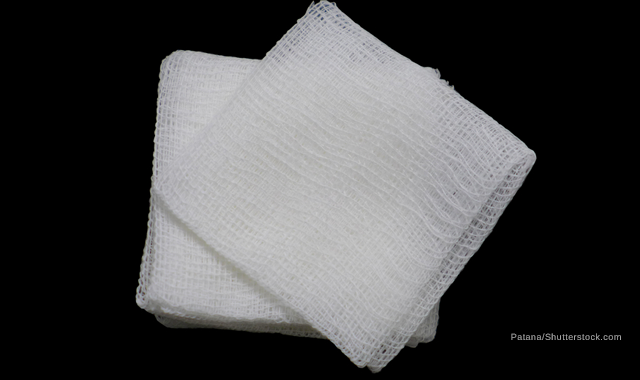
To cut costs, it’s acceptable to soak gauze in disinfectant to wipe equipment in-between patients.
Pre-soaking gauze in disinfectant is not recommended by the Organization for Asepsis and Prevention (OSAP) or the Centers for Disease Control and Prevention (CDC)4,5. The cotton fibers in gauze can absorb and inactivate the active ingredients in disinfectants leaving them less effective or ineffective all together8. The CDC cites a study that showed a significant decline in effectiveness of 40 to 50 percent after just one hour of soaking gauze in a quaternary ammonium disinfectant4. The CDC also cites a study that shows gram-negative bacteria can survive and even grow when other disinfectants (phenolics, iodophors) are soaked in gauze4. If you are going to use gauze with disinfectant, it should be saturated with the disinfecting agent at the time of use; this is said to be “acceptable” by OSAP5. To be perfectly clear, this pertains to soaking gauze; this does not pertain to pre-soaked, ready-to-use disinfecting wipes in the original manufacturer’s container.
We must also remember to use products according to the manufacturer’s instructions. If the instructions don’t state the product can be soaked in gauze, then it shouldn’t be done. While dentistry is a business, and keeping costs reasonable is a valid concern, putting our patients and ourselves at risk of cross-contamination is simply not an acceptable practice.



No artificial nails and keeping fingernails short and unpainted is only a hygiene school rule; it makes no difference in clinical practice
The CDC recommends that fingernails be kept short enough to allow a clinician to thoroughly clean underneath them as the majority of flora on hands is found under and around fingernails3. Artificial nails aren’t recommended by the CDC because studies have shown gram-negative bacteria levels are higher among artificial nail wears over non-wearers, even after handwashing2,4. While additional studies are warranted to assess the risk of artificial nails in dentistry, artificial nails have been implicated in multiple outbreaks involving fungal and bacterial infections in hospitals2. Freshly applied, non-chipped nail polish on short, natural nails has not been shown to increase the number of bacteria recovered from periungual skin (the skin around and underneath fingernails), however chipped nail polish can harbor added bacteria2,4.
The other concern with artificial nails or long fingernails, is their effect on glove integrity. Long artificial or long natural nails can make donning gloves difficult and can lead to tears4. You may not even realize you tore your glove as micro-tears are a possibility. The FDA states glove integrity can fail with exposure to mechanical and chemical hazards over time. A mechanical hazard includes long fingernails4.
So while maintaining short, natural nails isn’t a CDC mandate, it is a strong recommendation to keep both you as the clinician and your patients safe. Your hygiene school clinical instructors didn’t make this rule to be difficult, it was based on CDC recommendations backed by research. Ultimately, the choice is yours, however I’d hope the thought of harboring bacteria on your hands that go in patients’ mouths repeatedly, will help in your decision.


ADVERTISEMENT



Ultrasonic cleaner (shaker/bath) solution only needs to be changed every few days
Fresh ultrasonic cleaning solution should be prepared each day, discarding old solution and allowing the container to dry, in order to minimize bacterial contamination, according to the CDC4. The CDC also states that manufacturer instructions for preparation should be followed4. So unless the instructions clearly state that the solution can be used for multiple days it needs to be changed daily, if not more if it becomes foggy or murky. Keep the lid on the ultrasonic cleaner too; you don’t want to be inhaling aerosols from contaminated instruments!
You may be thinking, who wouldn’t change their ultrasonic cleaner solution daily? According to Sultan Healthcare, a manufacturer of infection control products, company research indicates that at least 25 percent of practices don’t change their ultrasonic cleaner solution often enough (at least once per day)10. Is this to cut costs or is it because offices just don’t know any better? Either way, it’s gross and no excuse. Please read and abide by manufacturer instructions on the products your office uses.


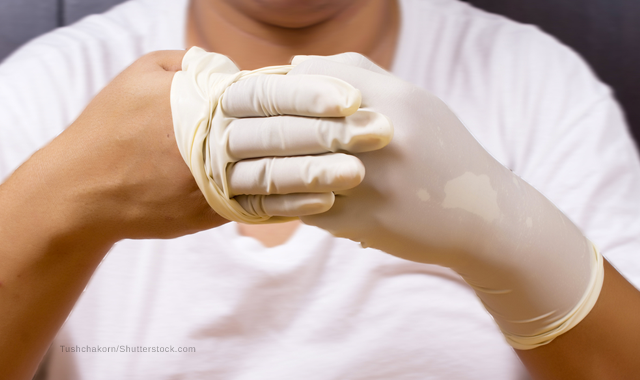
Extra infection control precautions should be taken with HIV/AIDS patients
To treat an HIV/AIDS patient differently, including alterations in infection control protocol, is unlawful, unethical and is blatant discrimination. HIV/AIDS patients are covered under the Americans with Disabilities Act of 1990. Failure to abide by the Act has led to filed complaints against dentists which have led to settlements ranging from $2,500-$50,0009. Further, HIV/AIDS patients should not be seen at certain times, on certain days, treated in different operatories, or referred or not seen because a clinician is “uncomfortable” treating them. Think this doesn’t really happen? It was found that one out of twenty dental practices in Los Angeles County had a policy of not accepting HIV/AIDS patients, which is in violation of state and federal law9.
Bottom line is that we should be abiding to standard precautions (this was changed from “universal precautions” in 19964) for every patient we treat, equally. Standard precautions mean we treat every patient as if they are infected with something, whether they disclose it or not. Therefore, no change in protocol is warranted for HIV/AIDS patients. The CDC states that dental health-care workers are at high-risk for acquiring or transmitting hepatitis B, influenza, measles, mumps, rubella, and varicella; note that HIV/AIDS is not on this list4. The CDC actually states that the transmission of HIV is extremely rare4. World-wide studies indicate that after a percutaneous exposure of HIV-infected blood is 0.3 percent4. After an exposure to mucous membranes of the eye, nose or mouth, the risk is even lower, at 0.1 percent4. Comparatively, the risk of transmission with a single percutaneous exposure with hepatitis B is about 30 percent or 100 times that of HIV1. Contracting hepatitis C after a percutaneous exposure to blood is three to 10 percent, or 10 times, the risk of HIV exposure1.
The only modifications to treatment that should be taken should be based on the actual health of the patient; for instance, INR count leading to a bleeding risk or blood counts indicating immunosuppression and the need for antibiotic prophylaxis, not just because a patient divulged they are HIV+ or have AIDS. Don’t double glove, process instruments differently, disinfect your operatory differently, or simply treat an HIV/AIDS patient any different than you would for a patient that didn’t check the HIV/AIDS box on their health history form. If you do, it’s discrimination which is illegal and unethical.


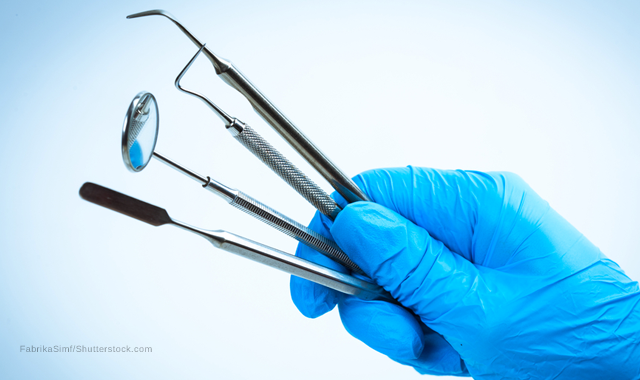
Some single-use or disposable items can be used more than once.
If the manufacturer’s instructions state their product is a single-use or disposable item, then it is only to be used once; no ifs, ands, or buts about it. Catching a theme here about reading manufacturer instructions yet? The CDC states that single-use items in dentistry are usually not heat tolerant and cannot be reliably cleaned4. Single-use items can deteriorate after use, leading to a potential of breakage during patient treatment4, which can make them dangerous to use more than once.
Re-using disposable sterilization pouches, even though they are not a direct patient care item, are not an exception either. They aren’t meant to be reused; they are neither designed for re-use nor FDA registered for re-use6,7. Re-using disposable sterilization pouches results in loss of chemical indictor ability, insecure sealing of the package, and the inability of the package to maintain the sterility of instruments6,7.
Like I mentioned previously, re-using single-use or disposable items to cut costs, or because you didn’t know any better, is simply not acceptable. How would you feel if your physician or surgeon wasn’t following proper infection control protocol? I’d assume you wouldn’t be happy. The same applies to dentistry.


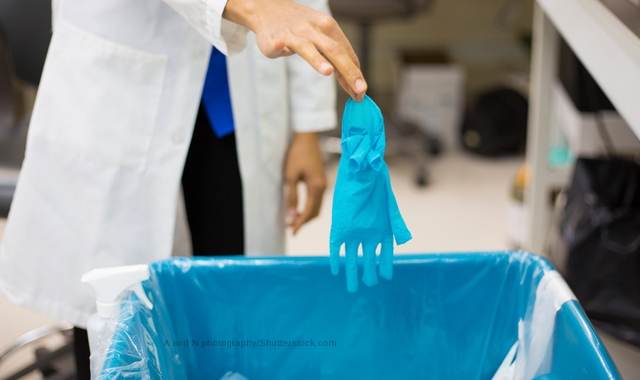
Conclusion
I encourage you to please take the time to read the 2003 CDC’s Guidelines for Infection Control in Dental Health-Care Settings4 and the 2016 CDC Summary of Infection Prevention Practices in Dental Settings3. The Summary even includes checklists offices can use to ensure infection control practices are up to par. Nearly every infection control question you may have, the answer can probably be found in the 2003 CDC Guidelines. Going to the source of protocols and regulations to answer your questions is never a bad bet and will give you the most accurate answer. For part one of “Infection control mistakes you may be making and not even realize,” click here.

Resources
1. Abel, S.N., et.al. (2000). Dental Alliance for AIDS/HIV Care. Principles of Oral Health Management for the HIV/AIDS Patient. Retrieved from
https://aidsetc.org/sites/default/files/resources_files/Princ_Oral_Health_HIV.pdf2. Centers for Disease Control and Prevention. Guideline for Hand Hygiene in Health-Care Settings. MMWR 2002; 51 (No. RR-16). Retrieved from http://www.cdc.gov/mmwr/PDF/rr/rr5116.pdf
3. Centers for Disease Control and Prevention. (2016, March). Summary of Infection Prevention Practices in Dental Settings: Basic Expectations for Safe Care. Retrieved from http://www.cdc.gov/oralhealth/infectioncontrol/pdf/safe-care.pdf
4. Kohn, W.G., Collins, A.S., Cleveland, J.L., Harte, J.A., Eklunt, K.J., Malvitz, D.M. Center for Disease Control and Prevention. Guidelines for Infection Control in Dental Health-Care Settings – 2003. MMWR 2003; 52 (Report No. 17). Retrieved from http://www.cdc.gov/mmwr/PDF/rr/rr5217.pdf
5. Organization for Asepsis and Prevention (OSAP). Frequently Asked Questions on Dental Infection Control. Retrieved from http://www.osap.org/?FAQ_Instrum_Disinf1#ireadrecently
6. Organization for Asepsis and Prevention (OSAP). Frequently Asked Questions Instrument Sterilization. Retrieved from http://www.osap.org/?FAQ_Instrum_Ster2#agraduate
7. Robinson, D.S., Bird, D.L. (2013). Essentials of Dental Assisting (5th ed.). St. Louis, MO: Elsevier Saunders.
8. Rutala, W.A., Weber, D.J., HICPAC. Centers for Disease Control and Prevention. (2008). Guideline for Disinfection and Sterilization in Healthcare Facilities. Retrieved from http://www.cdc.gov/hicpac/pdf/guidelines/disinfection_nov_2008.pdf
9. Sears, B., Cooper, C. Younai, F.B., Donohoe, T. (2001, Dec.). The Williams Institute. HIV Discrimination in Dental Care: Results of a Discrimination Testing Study in Los Angeles County. Retrieved from http://williamsinstitute.law.ucla.edu/wp-content/uploads/Sears-HIV-Discrimination-Dental-Care-Dec-2011.pdf
10. Sultan Healthcare. Retrieved from http://www.sultanresurge.com/Content3.html
